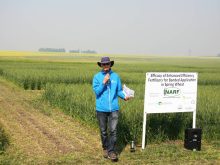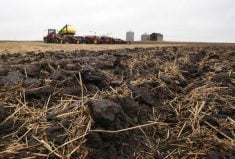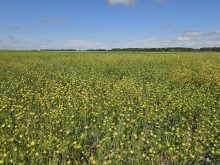POPLAR POINT, Man. – A trip through many parts of the Manitoba countryside is a journey through farmer hell, with big weeds, unseeded and late seeded fields and refugee cattle making the landscape an ugly quilt of bad-looking farmland.
Super-saturated soil has hobbled farmers across large parts of the province since spring thaw, and the cool, damp weather since the beginning of spring hasn’t fixed the situation.
The situation is even more dire along several of the province’s rivers, including the Souris and Assiniboine, where flooding has wrecked pastures and swamped cropland and vegetable farms.
Read Also

Short rapeseed crop may put China in a bind
Industry thinks China’s rapeseed crop is way smaller than the official government estimate. The country’s canola imports will also be down, so there will be a lot of unmet demand.
Thousands of cattle have been rescued from inundated pastures but are now housed on often-unsuitable land, with farmers desperately looking for pastures to hold them until the floods subside.
Keystone Agricultural Producers estimates that up to five million acres of Manitoba cropland might not be seeded this year.
That’s a whopping number, considering that the province has only 11.6 million seedable acres.
“Forty percent may go unseeded,” said KAP president Doug Chorney in an interview. “It’s a lot.”
Viterra estimated during its June 9 financial results presentation that prairie farmers would likely seed 54 to 56 million acres this spring, which is only two million acres more than in rain-ravaged 2010 and well below the more than 60 million acre mark hit in a number of recent years.
Manitoba is the hardest hit province, with the smallest farmland base of the three prairie provinces, and the flooding will bring hardship almost everywhere.
“They’re hooped again for another few days,” said Chorney June 13, as rain fell across the province after a couple of days of nice weather.
Farmers have taken to desperate measures to seed a crop, including broadcasting canola and scattering seeds from the air, but crop insurance deadlines are fast approaching and no one thinks millions of unseeded acres can be quickly seeded now.
The overall prairie slump in acreage is not great, but the concentrated slump in Manitoba will hurt Manitoba- dominated crops, such as sunflowers, soybeans and oats.
The oat market has anxiously watched the Manitoba situation unfold and has been pricing the risk into Chicago oats futures.
“We are seeing the oat market deal with the uncertainty by continuing to move oat prices firmer,” said Scott Merrihew of O’Bryan Commodities in Chicago.
“Since last month’s low on May 6, oats have firmed near 60 cents on the planting concerns and increased speculative interest in the contract. We are also seeing the nearby oats contracts firm on the deferred contracts as concern over supply causes the trade to want to make sure they own some of the current supply.”
KAP is asking for increased disaster payouts for affected farmers, which the provincial government supports and has passed on to the federal government.
“We could double the amount (of unseeded acreage) we had last year,” said Manitoba agriculture minister Stan Struthers June 13.
“I’ve heard of all kinds of pretty valiant attempts on the part of farmers around this province to get out there and get the job done. They’ve been protecting themselves by getting out and buying themselves excess moisture insurance, but in the end we’re going to have more unseeded acres than in any other year.”















